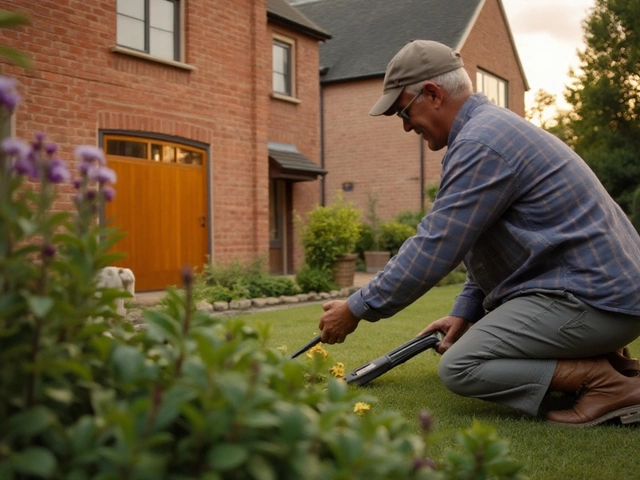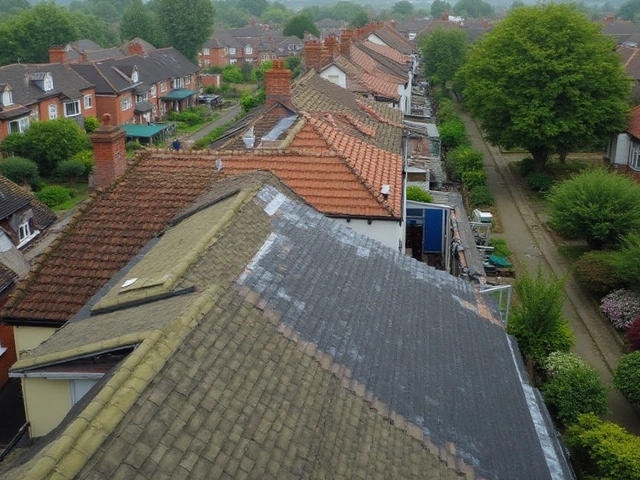Ever spotted a crack running across your basement wall or floor and wondered if it’s normal, or your house is about to collapse? Before you panic or dish out cash on quick fixes, let’s get real about foundation cracks. Some are harmless—just the house settling or concrete shrinking. Others, though, can mean water leaks or big structural headaches if you ignore them.
The big thing is figuring out what caused the crack and what it's telling you. A skinny hairline crack that stays the same might not matter much. But wide cracks, especially if they keep growing or let water seep in, are waving a red flag. Not all repairs are equal—caulking a basement crack and hoping for the best won’t cut it if water or soil pressure keeps chewing at your foundation. The method you pick can mean the difference between a one-time fix or yearly headaches.
We’re about to break down the real options out there, which ones make sense for certain cracks, and what actually works—not just for a few months, but for good. No tech talk, no upsells—just what homeowners actually need to know to keep their foundation solid.
- Why Foundation Cracks Happen
- Different Ways to Fix Foundation Cracks
- DIY vs Professional Foundation Crack Repair
- Tips to Prevent Future Cracks
Why Foundation Cracks Happen
So, why do foundation cracks show up in the first place? It usually comes down to stress—your concrete is dealing with more pressure than it can handle or just reacting to its environment. A big reason is the soil right under your house shifting around. When soil gets really wet and then dries out, it expands and contracts. This is super common with clay-heavy dirt. As it moves, it puts force on your foundation, sort of like squeezing a soda can until it buckles. Over time, bam—a crack forms.
Another classic problem: poor drainage. If your gutters dump water straight next to your house, the soil stays soggy, which adds pressure and makes things even worse. Basements are at extra risk, especially after heavy rain or snowmelt. According to the American Society of Civil Engineers (ASCE), about 25% of U.S. homes face structural distress at some point due to expansive soils—that’s a huge number.
Let’s not forget about bad construction or cheap materials. If the builders didn’t properly reinforce the concrete, or they poured it during freezing temperatures, weak spots show up early. Even the best concrete naturally cracks a little as it dries—this is called shrinkage cracking and isn’t always serious, especially if the cracks are skinny and short.
Other reasons include tree roots growing too close and sucking moisture out of the ground, earthquakes, extreme temperature swings, and even just age. A house built 50 years ago isn’t going to be as stable as one poured yesterday, unless it’s had solid upkeep.
- Foundation crack repair usually starts by tackling the root cause first.
- Check your yard’s grading and make sure water runs away from the house.
- Pay attention to nearby trees and big shrubs.
- If you spot new or widening cracks, get a pro to assess the risk before you caulk or patch anything.
The trick is knowing the difference between normal cracking and something that hints at bigger problems. Ignoring early signs only makes repairs tougher on your wallet and your house in the long run.
Different Ways to Fix Foundation Cracks
Choosing the right foundation crack repair method isn’t about what looks best—it’s about finding something that actually keeps out water and keeps your house stable. Here’s the lowdown on the most common fixes, what they actually fix, and when to trust them.
- Epoxy Injection: For cracks that aren’t moving and don’t have big water leaks, epoxy’s your best bet. It’s a super strong glue for concrete. When mixed and injected, it actually bonds the concrete together. But don’t use epoxy if there’s ongoing movement or water, or you’ll just trap the problem inside.
- Polyurethane Foam Injection: If your main worry is water leaking through a floor or wall crack, go with polyurethane foam. Techs inject it right into the crack, and it expands fast to fill every gap—even the tiny ones. It won’t actually hold the wall together like epoxy does, but it keeps water out way better. It works on cracks that flex a little with seasons.
- Surface Sealants and Caulk: Cheap and easy, but honestly, most of these are just Band-Aids. Surface sealants can work to stop drips on inside walls if the outside drainage works, but don’t expect any strength or long-term results if the crack gets bigger. Save this for hairline cracks only.
- Carbon Fiber Reinforcement: For cracks caused by walls bowing or flexing, carbon fiber strips are a game changer. After filling the crack, these strong strips get epoxied to the wall. They hold back movement—think of them as seat belts for your foundation walls.
- Exterior Waterproofing: Sometimes the real fix isn’t inside. If cracks keep coming back or water always finds a way in, you might need to dig outside, seal the foundation with waterproof coating, and add new drainage (like French drains). Yeah, it’s not cheap, but it’s really the only way to put an end to outside water attacking your foundation.
People always ask if they should just pour new concrete in the crack. Don’t. Concrete doesn’t bond to old concrete well—it’ll just crack again. Go with the right foundation crack repair tech for your specific problem, and you’re way more likely to have a dry, solid home for the long haul.
| Repair Method | Best For | Longevity |
|---|---|---|
| Epoxy Injection | Non-moving, dry cracks | 10+ years |
| Polyurethane Foam | Leaking or flexible cracks | 5–10 years |
| Carbon Fiber | Stabilizing bowing walls | Decades |
| Exterior Waterproofing | Chronic leaks & soil pressure | Decades |
| Surface Caulk | Minor, non-structural cracks | 1–2 years |
Matching the fix to the type of crack is half the battle. The other half? Making sure you deal with whatever caused it in the first place—like drainage or grading around your home. Patch the crack, and the problem sticks around. Tackle the cause, and the fix actually lasts.

DIY vs Professional Foundation Crack Repair
When you spot a crack, your first thought is probably: can I just fix this myself? For small, thin cracks—usually less than 1/8 inch wide—the answer is often yes. Most home improvement stores sell concrete crack repair kits that come with epoxy or polyurethane injection materials. These are designed for simple jobs, like hairline cracks in basement walls where water seeps in but the wall isn't bowing or crumbling.
Here’s a basic step-by-step for a DIY foundation crack repair using a kit:
- Clean out the crack with a stiff brush and vacuum up the dust.
- Seal the surface of the crack with the included paste or adhesive.
- Inject epoxy or polyurethane into the crack using the applicator tool.
- Let it cure according to the instructions (usually 24 hours).
These repairs can last years if the crack isn’t growing and isn’t a sign of a bigger issue. But here’s the hitch: if you notice a wide crack, a crack that’s getting longer or wider, cracks near doors or windows that won’t shut right, or if the floor feels uneven—step away from the DIY kit. These are classic signs of bigger problems like shifting soil or water damage.
That’s where professional foundation crack repair comes in. Contractors have access to tools like high-pressure injection systems, carbon fiber reinforcement, or even underpinning solutions if the home is settling badly. Most important, professionals start by figuring out what caused the crack in the first place, not just how to patch it. Did you know that a pro inspection can spot drainage problems or poor grading around your home that could lead to more cracks later on?
It’s not just about fancy tools—a reputable foundation repair company offers a warranty, sometimes up to 25 years, on serious fixes. That’s huge peace of mind compared to reapplying a cheap sealant every rainy season.
Here’s a quick cheat sheet for when to DIY and when to call for backup:
| Situation | DIY | Professional |
|---|---|---|
| Hairline crack under 1/8" wide, not growing | ✔️ | |
| Water leaking through the crack | ✔️ (if crack is small) | ✔️ (if leak persists or crack grows) |
| Crack wider than 1/4" or keeps growing | ✔️ | |
| Wall is bowing, crumbling, or shifting | ✔️ | |
| Doors/windows stick, floors uneven | ✔️ |
Don’t forget—patching a crack without checking for bigger problems is like slapping a band-aid on a leak. It pays to be honest with yourself about your skills and the seriousness of the crack. A one-time call to a pro is way cheaper than paying for major repairs down the road if you wait too long.
Tips to Prevent Future Cracks
Let’s be honest—fixing a foundation crack repair problem once is painful enough. Doing it again a few years later? No thanks. Here are proven steps to keep new cracks from popping up and protect your home for the long haul.
- Control Water Around Your Foundation: Water is enemy number one when it comes to foundation cracks. Make sure your gutters aren’t clogged and point downspouts at least 5 feet from your house. If soil near your foundation is always damp or puddles form after rain, you need better drainage. Consider installing a French drain or sloping the soil so water runs away, not toward your basement.
- Keep Soil Moisture Steady: When it’s dry, the soil under your house shrinks and can shift, which messes with your foundation. Soak the soil beside the foundation with a hose during dry spells (just don’t flood it). Staying consistent helps avoid sudden expansion or shrinking that causes cracks.
- Don’t Plant Trees Too Close: Trees and big shrubs seem friendly, but their roots suck up loads of water and can even push against foundations. Keep them at least 15-20 feet away to avoid root trouble and shifting soil.
- Watch for Plumbing Leaks: Even small leaks under the slab or near the basement can wash out the soil that supports your foundation, causing cracks or sinking. If you notice your water bill spiking or see unexplained damp spots, fix leaks ASAP.
- Seal and Caulk Regularly: Seal small cracks, gaps, and holes around your foundation every year. This stops water, air, and even bugs from sneaking in and making tiny cracks bigger.
If you’re curious just how much damage poor drainage can do, check this quick data snapshot from actual home inspections:
| Drainage Issue | % of Homes with Cracking |
|---|---|
| Poor Downspout Placement | 64% |
| Improper Grading | 53% |
| No Issues | 18% |
It doesn’t take much to mess up your foundation crack repair—but with a little bit of prevention, you can save yourself a lot of cash and headaches down the road. Make these tips part of your home’s yearly checkup.





